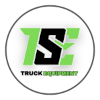Becoming a commercial truck driver in Canada is a rewarding career path that offers stability, good pay, and the opportunity to travel. However, it requires a combination of training, certification, and compliance with regulatory standards. This comprehensive guide will cover all the essential steps, factors to consider, and some interesting tips for aspiring commercial truck drivers in Canada.
Steps to Becoming a Commercial Truck Driver
- Understand the Job Requirements
Before embarking on a career as a commercial truck driver, it’s essential to understand the job’s demands. Truck drivers often spend long hours on the road, must meet strict delivery schedules, and handle heavy loads. Physical fitness, excellent driving skills, and a strong work ethic are crucial for success.
- Meet the Basic Requirements
To become a commercial truck driver in Canada, you must meet certain basic requirements:
– Age: You must be at least 18 years old to drive within a province and at least 21 to drive across provincial or international borders.
– Language Proficiency: Good command of English or French, depending on the region.
– Health: A medical examination is required to ensure you are physically fit to drive a commercial vehicle.
- Obtain a Commercial Driver’s License (CDL)
The most critical step is obtaining a Commercial Driver’s License (CDL). The process involves several stages:
- Choose the Appropriate Class of License
Different classes of CDLs are available based on the type of vehicle and cargo you intend to drive. The most common classes are:
– Class 1: Allows you to drive semi-trailers and large trucks.
– Class 2: Permits you to drive buses and other large vehicles.
– Class 3: For straight-body trucks.
- Complete a Driver Training Program
Enrolling in a recognized truck driving school is highly recommended. These programs provide hands-on training and classroom instruction on topics like road safety, vehicle inspection, and cargo handling.
- Pass the Written Knowledge Test
The written test covers traffic laws, safety regulations, and specific knowledge related to commercial driving. Study materials are available through provincial licensing authorities.
- Pass the Road Test
The road test assesses your driving skills, including maneuvering, backing up, and handling different traffic situations. Ensure you are well-prepared and practice extensively.
- Gain Experience
Most employers prefer candidates with some driving experience. You can start by working for companies that hire drivers with minimal experience or consider working as an apprentice with an experienced driver.
Important Factors and Considerations
- Job Opportunities and Demand
The demand for commercial truck drivers in Canada is high due to the essential nature of the trucking industry in transporting goods. Provinces like Alberta, Ontario, and British Columbia have a particularly strong demand for drivers.
- Salary and Benefits
The salary for commercial truck drivers can vary based on experience, the type of cargo, and the distance traveled. On average, truck drivers in Canada earn between $40,000 and $70,000 annually. Benefits often include health insurance, retirement plans, and bonuses.
- Work-Life Balance
Truck driving can be demanding, with long hours and time away from home. Balancing work and personal life is crucial for maintaining well-being. Some companies offer flexible schedules or regional routes to help manage this balance.
- Continuous Education and Upgrading
Staying current with industry regulations, safety protocols, and technology is essential. Many drivers pursue additional certifications, such as transportation of dangerous goods (TDG) or air brake endorsements, to enhance their qualifications.
Interesting Tips for Aspiring Truck Drivers
- Leverage Technology
Modern trucks are equipped with advanced technology to assist drivers. Familiarize yourself with GPS systems, electronic logging devices (ELDs), and other tools that enhance safety and efficiency.
- Network with Industry Professionals
Joining trucking associations and attending industry events can provide valuable networking opportunities, insights into industry trends, and potential job leads.
- Maintain a Healthy Lifestyle
The sedentary nature of truck driving can lead to health issues. Prioritize regular exercise, healthy eating, and sufficient rest to maintain your health on the road.
- Understand Regulatory Compliance
Stay informed about provincial and federal regulations regarding hours of service, vehicle maintenance, and cargo securement. Compliance with these regulations is crucial to avoid fines and maintain a good driving record.
Conclusion
Becoming a commercial truck driver in Canada is a fulfilling career choice that offers numerous opportunities. By understanding the requirements, obtaining the necessary training and certifications, and staying informed about industry trends, you can embark on a successful career in commercial trucking. Whether you’re just starting or looking to advance your career, this guide provides the essential information and tips to help you achieve your goals.


